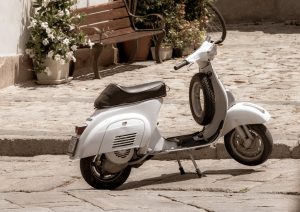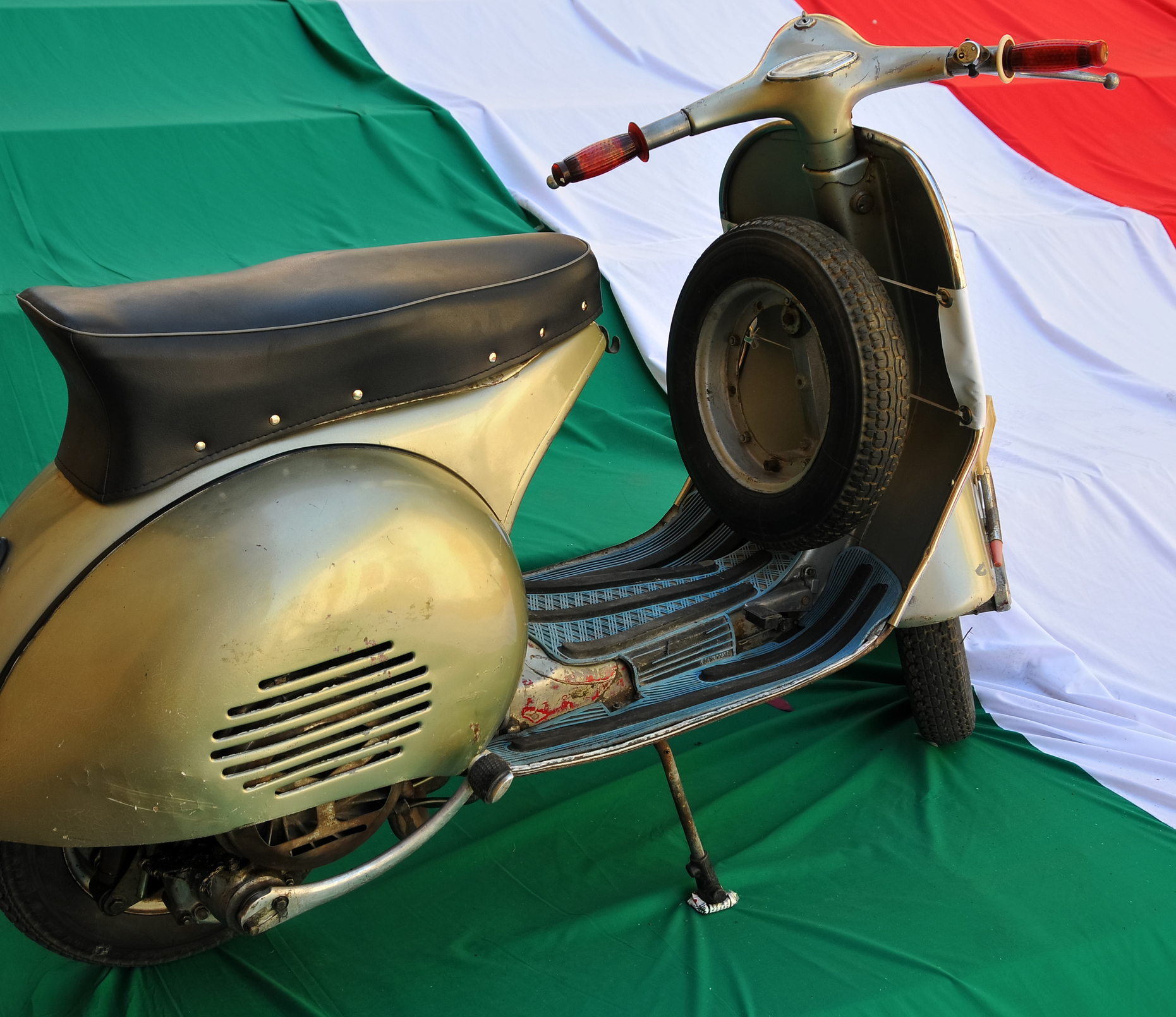Vintage Vespas have become increasingly very popular in the last few years and, since the American market opened to the famous Italian scooters, the interest has been growing over time. Vespa were first sold in the U.S. by Sears & Roebuck and remained very popular till 1980 when Piaggio, the main manufacturer, decided to pull off the U.S. market. Piaggio has successfully returned to America about ten years ago.
In the previous issue, we explored the world of vintage Vespas in San Francisco, by talking to the owner of BelloMotto, Gianluca Baldo, who has also a private collection with more than 100 samples.
During my visit at BelloMoto, I asked Gianluca if he had a preference or could pick at least the Vespa he would consider as a true jewel, in other words the “Queen of the Baldo Collection”. He did not hesitate when he pointed at the so-called Vespa “Roman Holidays” Model.
This Vespa, thanks to its grey-green colour, is the same model Audrey Hepburn was riding during the “Vacanze Romane” movie, directed by William Wyler in 1953. For this model alone, Piaggio produced as many as 150 thousands Vespas in two years, from 1951 through 1953. The Vespa now part of the Baldo collection dates back to 1951: its previous owner, Mario Beggi, is today the point of contact for BelloMoto in Italy. As he started collaborating with Gianluca three years ago, I got a chance to meet him during his first visit to San Francisco.

Mario, tell us more about the story of this Vespa.
My father, Giovanni, originally from Gorizia, in the Friuli Venezia-Giulia region, was a young guy that, once completed his studies after the Second World War, started working for an Italian cheese company. As he had some money set aside, he did what many Italian guys of that time used to do: he bought a new Vespa!
Your father’s story belongs to many other Italians in the early ‘50s…
You need to remember that, at that time, 80 liras were enough for people to feel and show their dream of freedom. The first commercial ever showed how women could easily and confidently drive that Vespa: nobody can forget the poster of a woman riding her beloved Vespa while going to work. That’s also the story of my dad, who used his Vespa to go to work for more than 25 years.
Then what happened?
In the ‘80s, my family decided to donate it to a private museum in Gorizia, the Museo Gratton. Then, thirty years later, I discovered I had my father’s passion for Vespas and motorcycles. Indeed, thanks to the kindness of the Museum director, I was allowed to repossess it and start its restoration. The Vespa was finally back with its original family.
How long did it take to take your Vespa to its “second life”?
I found the Vespa in very poor conditions and was worried I would have not been able to completely restore it. On the other hand, I spent one full year and several thousands euros to find the best mechanical professionals to do this job. We wanted a “conservative restoration” which allowed to keep the originality and uniqueness of our jewel.
After this great achievement, how could you give it up a second time?
In 2014, when the restoration was completed, I got to talk to Gianluca who asked me if I would be interested in having the Vespa become part of his collection. For the second time, my family had to make a decision for something which is very important to us. Everybody agreed that keeping it at home, after all the efforts we made to give the Vespa a second life, would have been of less use and probably diminishing to the Vespa itself. The final decision was not easy but we thought it was the best we could make, so I called Gianluca back.
What does impress Americans the most when looking at your Vespa?
The Vespa arrived in San Francisco in 2014, during the winter. Many people who get to see it for the first time want to know more about its story because it’s part of the Italian cinema iconographie. For this reason, we prepared a photo album containing pictures that can tell the Vespa’s story. Not only historical photos of my father’s, but also the ones I took when I found it in the Museum two years ago.
So, you agree the Vespa is the Queen of the Baldo Collection…
I believe that the amazing aspect of all vintage Vespas is that they all have a story to be told. But the story of my father’s Vespa is not only special but also unique. I am proud of this Vespa especially after it got the “Targa Oro”, a special tag that proves the authenticity of the scooter and its highest standards of quality achieved during the restoration. It’s a very important part of its story, and I am sure my father would be proud of it.































